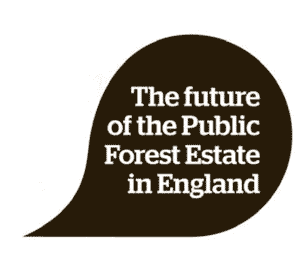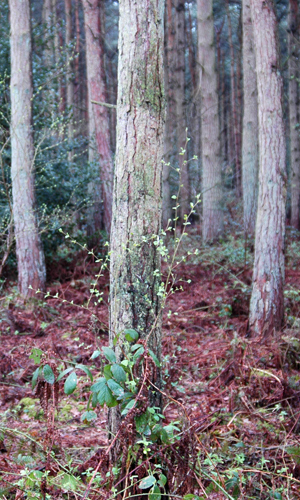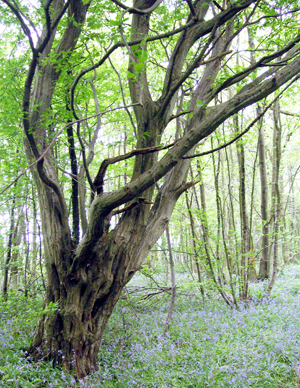What does the Forestry Commission consultation really say?

Few people have actually read the 64-page consultation document on the future of the Forestry Commission's English estate. I am one of those who have, and when I finished reading it my eyes were popping out because it doesn't say what you'd expect. Here is a short summary of the proposals. You certainly wouldn't guess them from what most of the press have said.
When you read what DEFRA says it turns out that the sell-off of 100,000 acres has already been decided and the consultation document is not about that at all. It is in fact principally about a lease-off and a give away.
To set the scene, let's be clear that this has no bearing whatever on Scotland or Wales where forestry decisions are devolved to the National Assemblies in Edinburgh and Cardiff: it only affects the Forestry Commission's land in England. The area of land affected is 258,000 hectares which equates to a bit over 600,000 acres in 1,500 different woodlands. It's a big area but surprisingly it isn't all covered in trees - about 20% is moorland, heathland or other openland. There is enormous diversity in the land being considered, from mature rich deciduous ancient woodlands to large areas of single-crop monoculture plantations, so any sensible discussion needs to take account of this variation.
 How does the DEFRA woodland categorisation work?
How does the DEFRA woodland categorisation work?
The consultation document divides the 600,000-acre estate into four types of land and has proposals for each of these. It is this difference of these approaches which seems to have confused the media and led to so much contradictory comment. The consultation refers to these four categories each of which represents about a quarter of the estate:
1. Large commercial forests. This includes areas used for quarrying (did you know about the quarries?) and areas with potential for windfarms;
2. Small commercial woodlands which often include conservation features and relatively low levels of public use;
3. Multipurpose forests with significant recreational benefits, high visitor numbers and high levels of biodiversity;
4. Heritage and community woodlands such as the New Forest and the Forest of Dean. This also includes the 6,000 hectares of newer community forests near urban areas which have been established over the last 15 years. These have high levels of public benefit but low timber income.
Of these, many of the 2nd category of woodlands (small commercial) are to be sold over the next 4 years (April 2011 to March 2015). This represents 40,000 hectares (100,000 acres), so that is about 10,000 hectares per year. That is a sell-off rate of about ten times the rate of sales of recent years. The decision to sell these is emphatically not part of the consultation as the decision on this land has in principle already been made (page 13).
The document explains how woodlands are protected through a range of measures including the
- Forestry Act 1967,
- Plant Health Act 1967,
- Sites of Special Scientific Interest,
- Areas of Outstanding Natural Beauty,
- National Parks legislation,
- CROW Act and
- general planning controls.
Why do they want to move ownership away from the Forestry Commission?
Radical reorganisation is needed, it suggests, in order to:
- ensure that the land is managed better for biodiversity, climate change and supporting economic growth;
- encourage there is more tree planting and sustainable management, driven by the private sector;
- support a more competitive forestry sector;
- reduce costs to the taxpayer;
- give the taxpayer the best return from capital receipts and leases;
- stop the Forestry Commission being conflicted by being both the manager of large areas of forestry and the official regulator.
Who might take on these woodlands?
The government wants to find new owners and managers for the whole estate, with the aim of protecting public access, biodiversity, landscapes and reducing climate change. To find these new managers, a number of ways are suggested of moving the estate out of government hands (beyond the 100,000 acres already scheduled to be sold).
- Giving it away to charities. This would be mainly for the Heritage and Community woodlands (group 4 above) and in these cases the charities would be given ongoing government funding for management but, critically, this funding would reduce over time (pages 28 and 29).
- Community right to buy or lease at market value. This would mainly apply to the multipurpose forests and other woodlands which are not transferred to charities. This is envisaged as quite a small category of about 20,000 hectares (only 7% of the estate).
- Selling long leases on the commercial forests. This is the big one covering up to half the Commission's estate (130,000 hectares, over 300,000 acres), and they envisage 150 year leases with lease conditions to cover public access, to guarantee friendliness to wildlife ("open habitats"), to help restore ancient woodland with damaging plantations on it. These leases would also ensure that forestry management is good ("certification"). There would also be some actual freehold sales of smaller parcels of plantations where money needs to be spent to restore ancient woodland sites.
How quickly will all this change in woodland ownership happen?
Clearly the government wants to get on with it but there is also a lot of land to transfer and the public are obviously massively concerned, indeed almost up in arms. The government's response is due out in the summer of 2011 but the whole process is envisaged as taking several years to complete.
Where does this leave the unloved Forestry Commission?
Of Forestry Commission England's 1,200 staff almost 1,000 are managing the land they own. The others do things like regulating private woodlands. Forestry Commission England will survive but will obviously be much smaller and "substantially reformed". Policy making will be done wholly by DEFRA in London, rather than partly in Edinburgh, and the main remaining roles of Forestry Commission England will be:
- protecting all woodlands against disease and climate change;
- encouraging tree-planting and giving advice
- promoting the commercial forestry sector
The consultation is a radical document but not a simple one. Given that most of the open market sales have already been decided, the consultation is not really about a Forestry Commission Sell-off; rather it is about two other things: a Forestry Commission giveaway to charities and a large commercial lease-off. Even so, it has put discussion of woodland ownership firmly on the public agenda where it will certainly remain for all of 2011.
Comments are closed for this post.
Discussion
This all looks good on paper, but humans are a diverse lot with different agendas.
Who will pay anyone to regulate all these areas of our heretige and wildlife havens?
(I suppose if the new owners are right minded atleast they could stand up against wild life murderers like badger baiters, fox hunters and government badger killers… as they would presumabaly be close at hand to act..?)
How does the DEFRA categorisation work?
It doesn’t – These categories suggest they are suited to different ownership models yet we know most of our forests and woodlands are multi purpose. For example most of the ‘heritage forests’ still generate the majority of their income, to help off set other management costs, from timber yet a small ‘commercial woodland’ located near to a community can have visitor numbers in the hundreds of thousands.
Why do they want to move ownership away from the Forestry Commission? … each point in turn if I may …
All FC woodlands have achieved FSC status and 99% of SSSI’s are in target condition, a figure not even matched by RSPB.
82% of woodlands are already in private sector, many initiatives looking at new planting around already, such as Woodlands Carbon Task Force
All FC timber is sold competitively. FC publishes a 5yr production forecast allowing the trade to plan ahead. Who will do this in future?
DEFRA’s own impact assessment showed that the costs associated with of each model will outweigh the benefit.
Once in the private sector, income from timber sales is tax free. Lots of good advice here within this website!
Split, back in 1992 was generally welcomed by the private sector and unnoticed by the public. UKWAS certification has made this a bit academic anyway.
Thanks for the opportunity to comment,
Weez

Spoken like a true estate agent.
Springer
11 February, 2011